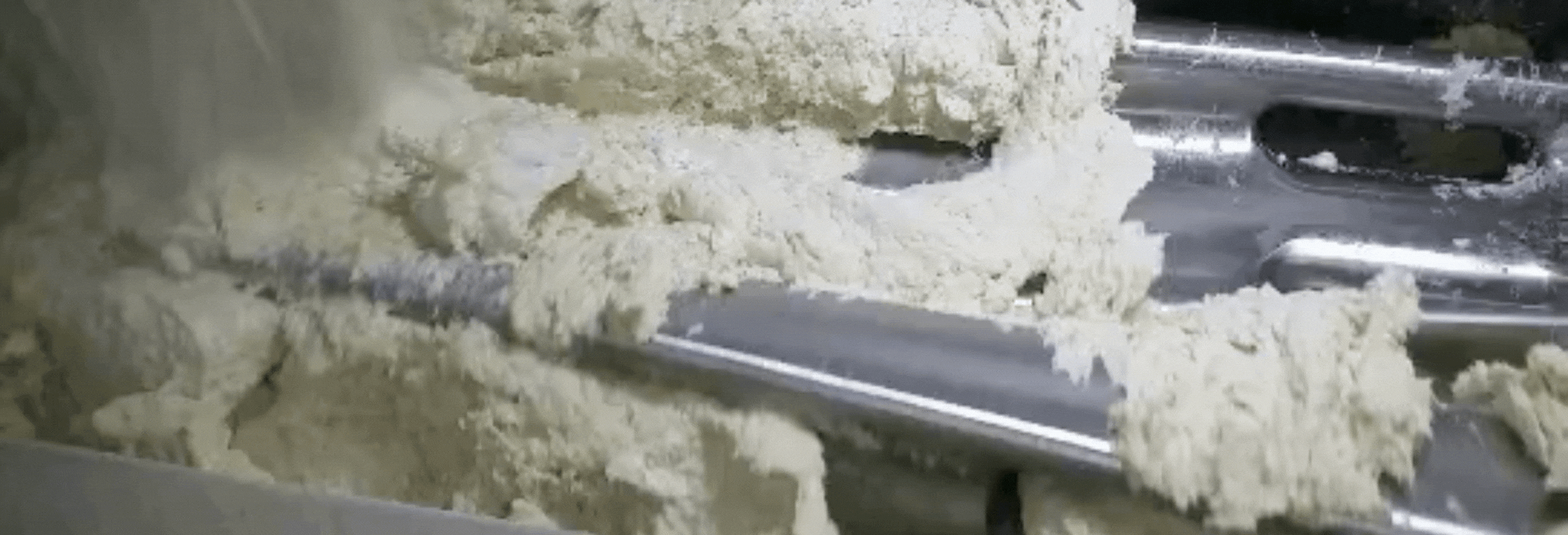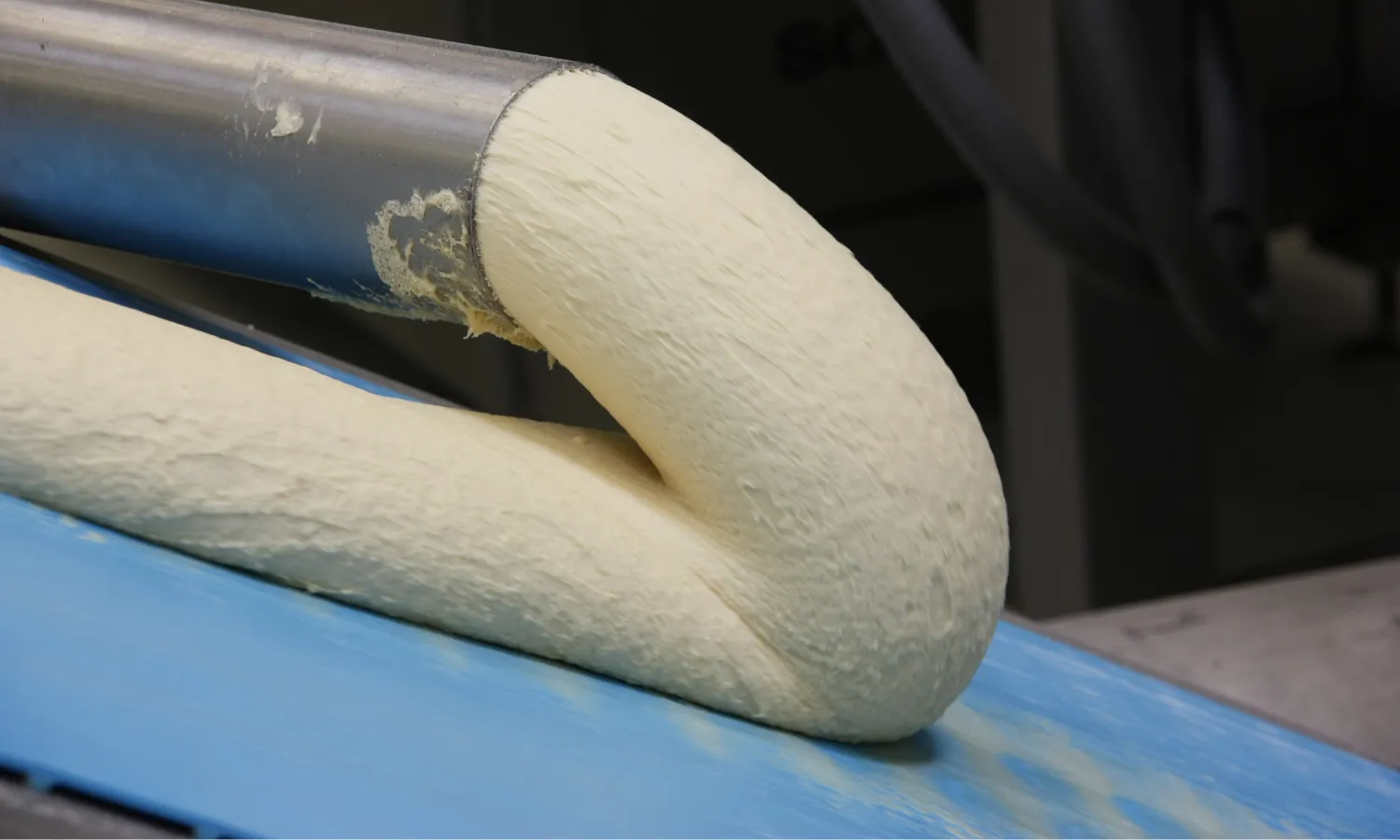Controlled kneading intensity in continuous dough mixing


In dough production, the development of gluten structure is directly influenced by the energy input during the mixing process. At Sobatech, this input is precisely quantified in watt-hours per kilogram (Wh/kg)—a highly objective and repeatable quality parameter.
Sobatech’s continuous mixing systems are uniquely equipped to continuously monitor and control the energy input (Wh/kg) during production. This capability allows for precise regulation of kneading intensity, ensuring consistent dough structure and product quality.
Different dough types require varying levels of energy input to achieve optimal texture and elasticity. Examples include:
By precisely controlling the energy input, Sobatech ensures that each dough type receives the exact kneading intensity it requires for ideal development.
The mixing tools inside Sobatech’s continuous mixers are meticulously engineered to deliver the required energy input for each specific dough type. Tool design plays a critical role in achieving the desired kneading intensity and ensuring repeatable, high-quality results.
Sobatech has identified over 35 design variables that influence dough quality. These factors are integrated into a proprietary mathematical model used to tailor each mixer. The required energy input (Wh/kg) is a foundational parameter in this design process, ensuring the mixer is optimized for the product it will produce.
Controlling kneading intensity through measured energy input provides a number of critical benefits:
By using Wh/kg as a key control parameter, Sobatech ensures that dough is neither under-developed nor overworked—delivering consistent quality and performance in industrial bakery applications.

Sobatech’s continuous mixing systems offer unmatched control, precision, and flexibility by using energy input as a measurable parameter. Whether you produce soft cookies, crisp baguettes, or high-volume toast bread, Sobatech can design a system optimized for your exact product needs.
Want to know what this means for your production line? Contact us.
.webp)
.webp)
.webp)